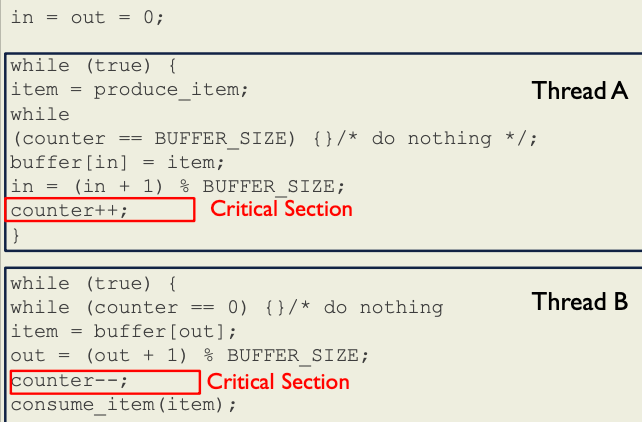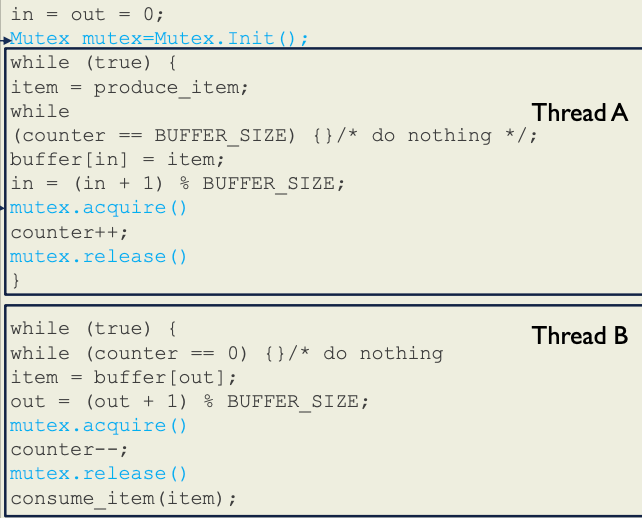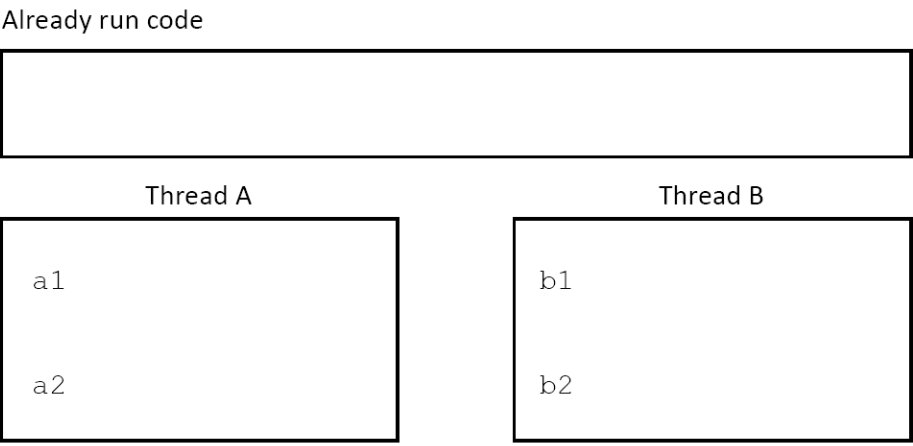Process Synchronization
1/10
There's no tags or description
Looks like no tags are added yet.
Name | Mastery | Learn | Test | Matching | Spaced |
|---|
No study sessions yet.
11 Terms
How does atomic execution and critical sections work?
Places that require atomic executions are called critical sections and this is where execution of code by only a single thread happens
What are the 3 forms of synchronization?
Mutex
Semaphores
Monitors
What are the calls for Mutex?
acquire and release

What would this code look like if we added Mutex code?

What is the disadvantage of using a mutex compared to a semaphore?
Mutex locks only allow one thread to use the critical section
What are the calls for Semaphores?
wait and release
When using semaphores, when can you access a critical section?
When S is greater than 0
When does a semaphore increment and decrement?
Decrements when the thread enters the critical section and increments when the thread leaves the critical section
What is the disadvantage of using busy waiting in Semaphores?
It wastes CPU cycles

What would the code look like?
a1 has to happen before b2
b1 has to happen before a2
(Use more than one semaphore)
Will this cause a deadlock? Why?
Yes, because both threads will be at -1

Why does a mutex need a lock holder pointer but semaphores don’t?
Because in a mutex, only the lock holder can release the lock. In a semaphore, threads using increment could be different than those using decrement